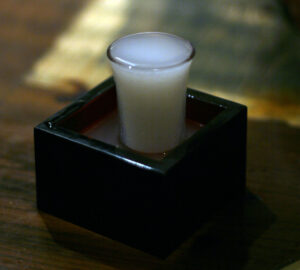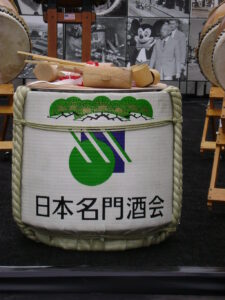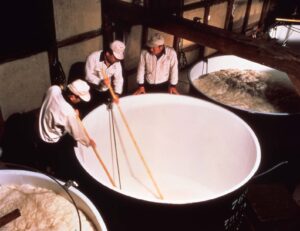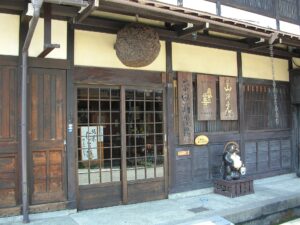This week, we’re exploring the history of Japan’s most famous drink: sake, or Japanese rice wine (though it turns out, ‘sake’ in Japanese doesn’t necessarily refer to what we think of, nor is it actually a ‘rice wine’ in the technical sense). We’re covering everything from tax laws to how to make your own sake using nothing but your own spit, so buckle up! It’s gonna be a fun one.
Sources
Bunting, Chris and Stephen Lyman. The Complete Guide to Japanese Drinks. Tuttle Publishing, 2019.
Hori, Keisuke, et al. “Which do you prefer, artisanal or laboratory-made? Quantification in traditional Japanese sake brewing.” Hitotsubashi Journal of Commerce and Management 51, No 1 (October, 2017).
Francks, Penelope. “Inconspicuous Consumption: Sake, Beer, and the Birth of the Consumer in Japan.” The Journal of Asian Studies 68, No 1 (Feb, 2009).
Droppers, Garrett. “Taxation in Japan.” The Quarterly Journal of Economics 6, No 4 (July, 1892).
A fascinating Japan Times article on the decline of the youth sake market in Japan by Sarah Crago.
An NBC piece on the international sake market.
Images





I tried to look up the oldest brewery in Japan, but the one you mentioned in Nara did not pop up. Could you please share the name of it? Thank you.
Imanishi Shuzo is the name, but I don’t know how much of a web presence they have; places like that tend to avoid it in my experience with Japan because that’s perceived as more authentic.
One thing that I noticed when I visited the Meiji Shrine in Tokyo was that on the main walkway in on one side they sake barrels from various breweries donated to the shrine on display and on the other were various European wine casks that apparently formed part of the emperor‘s collection having develop a taste for the drink after the country begin opening up. I know you touched on this a little bit during the shell, but, how much was Sake knocked off its pedestal during the first part of the Meiji era when nearly all cultural things Japanese were viewed as “backwards”? Was there a serious effort to get people to stop drinking sake much like they were encouraged to wear western style clothing and adopt other western habits?